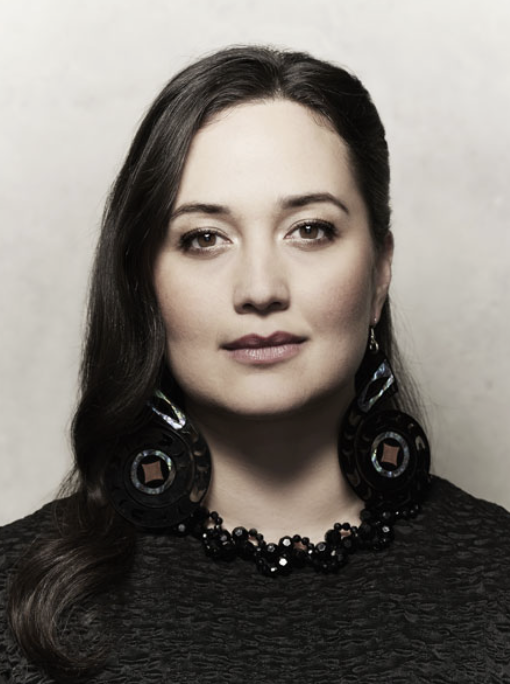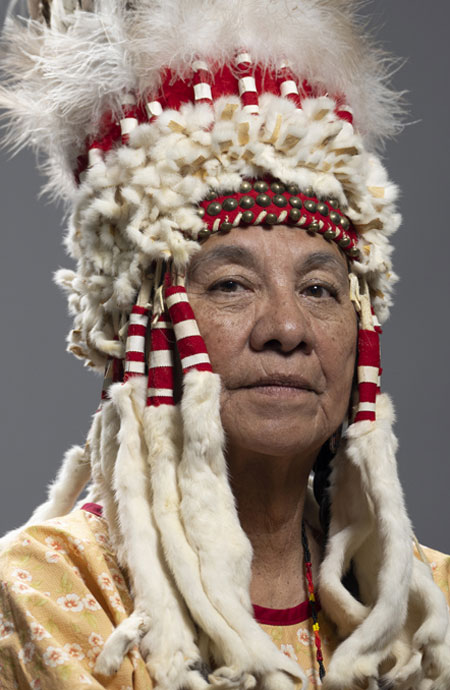The University of Montana will present honorary doctorates this spring to Lily Gladstone and Carol Tatsey-Murray, two outstanding Native leaders with strong ties to the Blackfeet Nation.

On March 15 the state Board of Regents approved UM’s request to present the doctorates during Commencement ceremonies on Saturday, May 11. Schedules permitting, both Gladstone and Murray will serve as UM Commencement speakers.
Gladstone is a Golden Globe Award winner and Academy Award nominee for her portrayal of Mollie Burkhart in “Killers of the Flower Moon.” Murray is a renowned educator, tribal elder and former college president working to protect and enhance Blackfeet culture.
Both women are UM graduates. Gladstone earned an undergraduate degree in acting and directing with a minor in Native American studies in 2008. Murray earned an undergraduate degree in elementary education in 1982.
“Lily and Carol serve as shining examples to Montana students of how a UM education can propel you toward future success,” UM President Seth Bodnar said. “These two women are making real change in the world, and we are extremely proud to present both of them with one of UM’s highest honors, an honorary doctorate.”
Gladstone will receive an Honorary Doctorate of Fine Arts, and Murray will receive an Honorary Doctorate of Education.
Lily Gladstone
Gladstone was raised in Browning on the Blackfeet Indian Reservation. She has Blackfeet, Nez Perce, Dutch and Cajun ancestry. Her first acting gig was as an evil stepsister in a traveling Missoula Children’s Theatre production of “Cinderella,” and she recalls ballet lessons in the basement of a Browning church. Her family later moved to the Seattle area, where she finished high school.
Gladstone returned to Montana as the first Native student to earn a Presidential Leadership Scholarship from UM’s Davidson Honors College – the University’s most prestigious recognition for incoming students. She became deeply engaged with UM’s School of Theatre and Dance, performing in plays and student films.
After graduation she toured with UM Montana Repertory Theatre productions of “To Kill a Mockingbird” and “The Miracle Worker.” She also wrote a play, directed children’s theater in Seattle and worked on a project that allowed her to perform one-woman plays about Native American boarding schools, Japanese internment camps and migrant farmworkers.
Then in 2012, she launched her film career in “Winter in the Blood,” a film based on a book by Blackfeet author and former UM faculty member James Welch. The film crew had many ties to UM and Missoula.
“My whole career was launched in Montana,” Gladstone said. “It’s going to be something that I’m endlessly proud of.”
Other film roles followed, including her breakthrough in 2016’s “Certain Women” that earned wide critical acclaim. She also appeared in “First Cow,” The Unknown Country” and Hulu’s “Reservation Dogs.”
She landed the lead role in 2023’s “Killers of the Flower Moon,” which was directed by Martin Scorsese and based on the book by David Grann that explores mass murders of Osage tribal members in 1920s Oklahoma. Besides the Golden Globe win, the role won her best actress awards from the Screen Actors Guild, New York Film Critics Circle, Satellite Awards and Gotham Awards. She became the first Indigenous person nominated for the Academy Award for Best Actress in a Leading Role.
“In the process of learning about the horrific Reign of Terror, remember that the Osage remain,” Gladstone said. “Native people remain. And this story is a lot to take in. Be kind, and please be gentle with each other. There is much to process, and much to heal.”
Carol Tatsey-Murray
Murray is from Badger Creek, Montana near Browning and now lives along the Two Medicine River on the Blackfeet Indian Reservation. According to her nominators, she is an educator who has dedicated her life to the preservation, promotion and revitalization of Native American culture, particularly for her people of the Amskapii Piikanii (Blackfeet Nation).
Murray earned an associate’s degree from Blackfeet Community College in 1982. Then after attending UM, she earned a master’s degree in adult higher education from Montana State University. She went on to work 36 years for Blackfeet Community College, where she was president for eight years, interim president for six years and vice president for six years. She also served in other essential roles such as registrar. She became the first tribal college graduate to become a tribal college president.
During her time at the college, Murray secured more than $20 million in faculty development projects and helped launch construction of the Beaver Painted Lodge building on the BCC campus.

Karla Bird, UM’s tribal outreach coordinator, said Murray established Blackfeet Studies at the tribal college, “demonstrating her unwavering commitment to preserving and promoting Native American Heritage through education.”
Murray also has worked tirelessly for repatriation of Blackfeet cultural and ceremonial items, and many of these sacred items now have been returned to the Blackfoot Confederacy.
“This work goes beyond the mere act of repatriation,” said Melissa Little Plume-Weatherwax, a BCC official. “It represents the restoration of the spiritual identity of the Blackfoot people, allowing future generations to connect with ancestral knowledge systems.”
Murray also has energized various traditional tribal societies, such as the Blackfoot Woman Headdress Society, Beaver Bundle Society, Horn Society, Crazy Dog Society and Thunder Pipe Society.
In addition, she championed cultural events that celebrate the rich history of the Blackfeet Nation.
“Events such as the Days of the Piikani and the Bear River Massacre Commemoration, founded by Carol, serve as platforms for the community to come together, honor their history and ensure their stories are passed down through the generations,” said Helen Augare Carlson, a BCC administrator.
Murray’s impact is felt far beyond the reservation, including at UM, where she has contributed to the research and advancement of Blackfeet studies. Additionally, she is a sought-after guest speaker on various historical and traditional topics.
She now serves as tribal adviser for the Blackfoot Gallery at the Glenbow Museum in Calgary, Canada. She previously served as a co-curator of Our People’s Gallery at the National Museum of the American Indian, which is part of the Smithsonian Institution.
Help us defend tribal sovereignty.
At Native News Online, our mission is rooted in telling the stories that strengthen sovereignty and uplift Indigenous voices — not just at year’s end, but every single day.
Because of your generosity last year, we were able to keep our reporters on the ground in tribal communities, at national gatherings and in the halls of Congress — covering the issues that matter most to Indian Country: sovereignty, culture, education, health and economic opportunity.
That support sustained us through a tough year in 2025. Now, as we look to the year ahead, we need your help right now to ensure warrior journalism remains strong — reporting that defends tribal sovereignty, amplifies Native truth, and holds power accountable.
 The stakes couldn't be higher. Your support keeps Native voices heard, Native stories told and Native sovereignty defended.
The stakes couldn't be higher. Your support keeps Native voices heard, Native stories told and Native sovereignty defended.
Stand with Warrior Journalism today.
Levi Rickert (Potawatomi), Editor & Publisher

